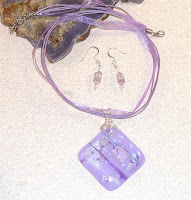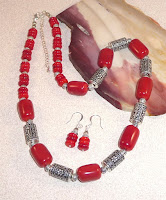In a small corner of Switzerland where Italian is spoken and roughly one-third of the world’s gold is refined into bars and ingots, business is booming. Every day, bangles, bracelets and necklaces arrive in plastic bags — from souks in the Middle East, from pawn shops in Asia and from corner jewelers in Europe and North America. “It could be your grandmother’s gold or the gift of an ex-boyfriend,” said Erhard Oberli, the chief executive of Argor-Heraeus, a major refiner that processes roughly 400 tons of gold a year. “Gold doesn’t disappear.” Amid a global frenzy fed by multibillion-dollar hedge funds, wealthy speculators and governments all rushing to stock up on the precious yellow metal, the price of gold has now surpassed $1,100 an ounce.

Long considered the ultimate refuge for nervous investors, gold has climbed as the dollar has steadily weakened, budget deficits have expanded in the United States and Europe, and central banks have continued to pump trillions of dollars into weak economies, creating fears of another asset bubble that will ultimately pop. It’s not that gold has changed, but gold buyers have changed. It’s a structural shift seen on the investing side, from Asian central banks right down to individual investors buying ingots and coins. Gold’s appeal has broadened. Indeed, last month, Harrods, the 160-year-old London department store, began selling coins as well as gold bullion ranging from tiny 1-gram ingots to the hefty, 12.5-kilogram, 400-Troy-ounce bricks that are so often featured in movies and stocked inside the vaults of Fort Knox. Harrods’s lower ground floor, where the gold is peddled, has been packed with interested shoppers. Bars are definitely more popular than coins. The 100-gram is the most popular.
.
IN the United States, ads promising high prices for gold are regular fodder for late-night television spots, while buyers are setting up tables at shopping malls or hosting gold-buying gatherings at private homes. 10 times as many people are going into stores to sell gold compared to when the metal was selling for $300 an ounce at the beginning of the decade. Adjusting for inflation, gold would have to top $1,885 to set an all-time record.
.
China has already doubled its gold reserves over the last six years underscored how even the most traditional investors are shifting a portion of their assets into bullion.
.
Over all, in the second quarter of 2009, consumption of gold for jewelry plunged 20 percent, while investor demand for gold increased 51 percent, according to the World Gold Council. Demand for bars weighing 100 ounces or less for individual investors is up 80 percent. Inflows of old gold jewelry and individual investor sales are especially strong in the United States and Western Europe. In the past, hoarding gold as an investment was much more popular in the Middle East and Asia. Europe and the United States are the emerging markets. In addition to high anxiety about the future, recent political trends may also be playing a part in the global gold fever. With a crackdown on tax havens worldwide and Swiss bankers handing over the names of wealthy American clients to authorities, some experts say rich people now prefer an investment that can easily be hidden from the prying eyes of tax collectors. In Europe, people want physical gold to store themselves, with no documents.
.
The region surrounding Mendrisio has dominated gold refining for decades, profiting from its close proximity to northern Italy — which has a long tradition of jewelry-making and cheap labor — as well as from Switzerland’s own reputation for financial stability and discretion. The Swiss government has also nurtured the business, guaranteeing gold assays for purity and carefully regulating the industry. One of the 100-gram bars that is produced just about fits in the palm of ones hand, with a satisfying metallic coldness that belies its $3,500 price tag. The standard 12.5-kilo, 400-ounce brick, on the other hand, is a monster, straining the wrist as well as the imagination: but just one of these thick bars commands a higher price than a studio apartment in Manhattan. India is now a far bigger consumer than Italy of gold for jewelry.
.
Gold has been around as an investment or placed in jewelry for over 6,000 years, there is just nothing else like it, with no real alternative.
.
Partial reprint of a New York Times article...
 An Ocos Agate Geode are geodes that have been cut open then polished on the edges. They have not been dyed, as collectors desire their natural color. They have very interesting natural designs on the edges and on some of the crystals inside. Ocos or Ochos are very small geodes that exhibit all the properties of larger agate geodes. The name Ocos comes from the region of Brazil along the Orinoco River where these small geodes are easily found. While not true Ocos Geodes, small 'Ochos' type geodes can also be found in many places, especially in the United States. Some people believe that Ocos came from the Portuguese word for "hollow", and thus any small geode carries the name Ocos or Ochos.
An Ocos Agate Geode are geodes that have been cut open then polished on the edges. They have not been dyed, as collectors desire their natural color. They have very interesting natural designs on the edges and on some of the crystals inside. Ocos or Ochos are very small geodes that exhibit all the properties of larger agate geodes. The name Ocos comes from the region of Brazil along the Orinoco River where these small geodes are easily found. While not true Ocos Geodes, small 'Ochos' type geodes can also be found in many places, especially in the United States. Some people believe that Ocos came from the Portuguese word for "hollow", and thus any small geode carries the name Ocos or Ochos.















 Staying with glass, here is a Black and Copper Glass heart pendant and matching earring set, again on a ribbon necklace.
Staying with glass, here is a Black and Copper Glass heart pendant and matching earring set, again on a ribbon necklace.
























